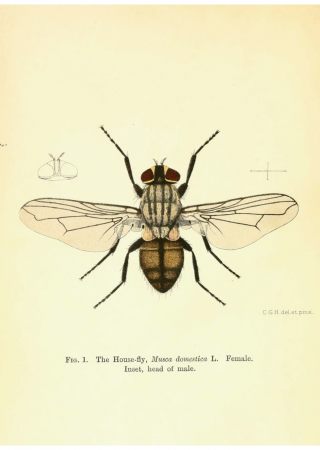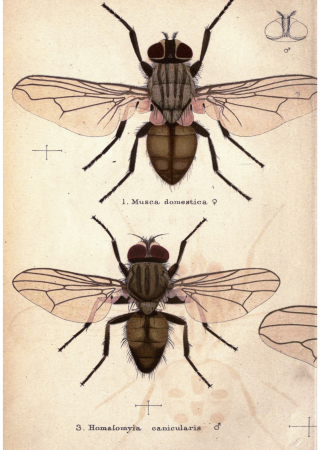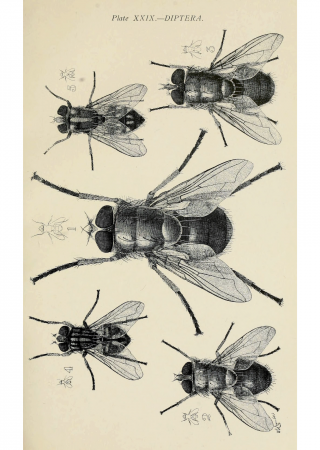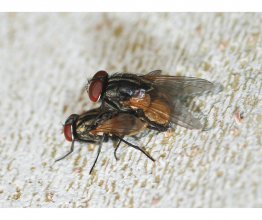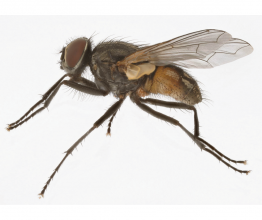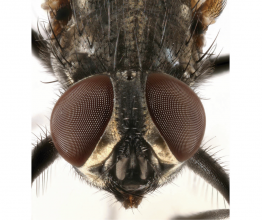House Fly
- …houseflies can transmit more than one hundred diseases?
- …in tropical conditions, a housefly can produce up to twenty generation of offspring per year?
- …in European conditions, a housefly produces around five generations of offspring?
- …houseflies winter over in attics, or between windows?
- …male houseflies can be differentiated from females in the structure of their eyes, which almost touch the crown of the head in males?
Houseflies are the most widespread species of fly, and have practically a cosmopolitan distribution. They live on excrement, garbage and other rotting and decaying organic material with a high concentration of saccharides. This lifestyle causes them to be excellent carriers of disease, primarily intestinal diseases. Adult flies have sucking mouthparts, which permit them to consume only liquids. They dissolve some solid material with their saliva. Females lay up 150 eggs, which soon hatch into headless larvae. These pass through three developmental stages, separated by moltings, lasting about nine to fourteen days, after which they cocoon themselves in the topmost layer of soil. Females mate again shortly after laying eggs, so that within two months, a female can lay up to 1000 eggs.

